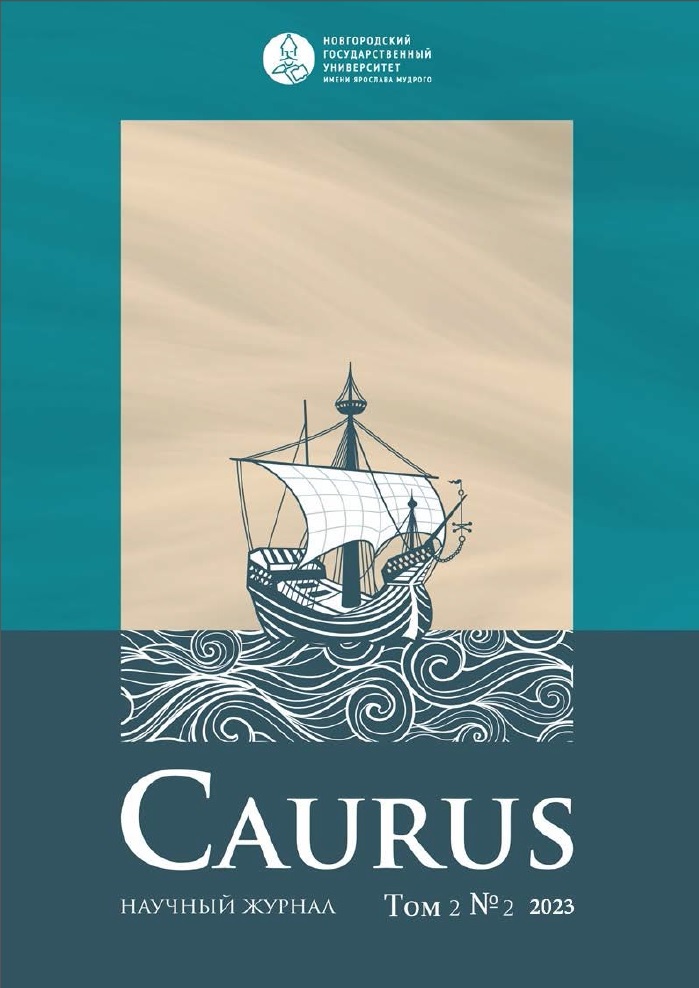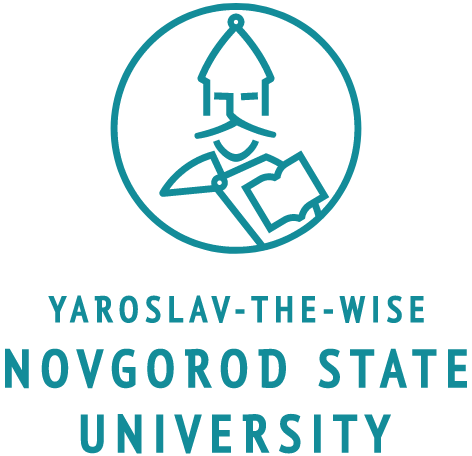Editors’ foreword
Abstract
Dear readers!
We bring to your attention the second issue of the second volume of the scientific journal “Caurus”. To a greater extent, it is devoted to the study of sources, both written and cartographic, reflecting history not only of the Baltic region, but also other European regions of the Middle Ages and Modern times. According to the editors, this issue reflects various methods and research approaches applicable to the analysis of historical sources that arose at different times in the context of various political and socio-economic factors. It is worth noting that in the articles of this issue, one can find information taken from a number of European archives, namely the Tallinn City Archives, the National Archives of Estonia, the National State Historical Archives of Latvia, the National Archives of Sweden, the archives of the Hanseatic city of Lübeck, the Scientific and Historical archive of Saint-Petersburg Institute of History of the Russian Academy of Sciences, as well as from the collections of the Novgorod State Museum-Reserve. Such a variety of sources allows reflecting current approaches to their study.
This issue opens with an article by Valentina A. Yakunina (Veliky Novgorod), which presents an option of using descriptive statistics in relation to the business documentation of Narva of the 15th century from the Tallinn City Archives, which has not previously been subjected to statistical processing. The graphic material of the article (diagrams, tables, and schemes) convinces of the correctness of the findings about the consistent redistribution of judicial powers in trade litigation with the participation of Russian merchants and their transition from the order administration of the city to the Magistrate in the conditions of the development of Russian-Hanseatic “unusual trade”. The list of members of the Narva Magistrate with mention of their trade and family connections is of interest in terms of reconstructing the Narva sector of the Hanseatic “network” (Netzwerk), a characteristic feature of the Hanseatic professional-kinship organization. A description of the 57 examined documents of the Narva Magistrate, preserved in the Tallinn City Archives, is placed in the Appendix to this article.
The phenomenon of Russian-Hanseatic “unusual trade” of the early modern period is covered in the article by Maxim Yu. Kolpakov (Veliky Novgorod) by identifying “unusual” trade locations and routes in the Pskov-Livonian border zone of the late 15th–16th centuries, as well as their scientific mapping, the main object of which is the road between the Marienburg (Alūksne) Order Castle and Pskov. The significance of the Marienburg Road, which for a long time functioned in the mode of Russian-Hanseatic “unusual” trade, is all the more important because it was related to the trade strategy of Pskov, Riga, Reval, Dorpat and the Livonian Order, and therefore the study of the entire range of problems associated with it is fundamentally important to understand the nature of the relationship between the Late Hanse and Russia. The main source is Swedish cartographic sources of the 17th century with designations of settlements, estates, and roads in the border regions of Estonia, Livonia and Courland, the data of which is correlated with information from sources on the history of Livonia estates of the 16th century and descriptions of travel. Reconstruction of sections of the Marienburg road adjacent to the Pskov-Livonian border helps to evaluate their advantages compared to traditional trade routes, in particular those associated with Dorpat and non-Hanseatic Narva, as well as make a number of interesting observations regarding the distances between the final settlements, speed of movement, road quality, crime situation, the presence of crossings over water barriers, inns and taverns, places for daytime recreation and overnight accommodation. Of great importance are reprints of historical maps from foreign archives, used by the author as sources for determining the location of roads, which for the most part were not published.
Vysloužilová Dagmar (Brno, Czech Republic) addresses the religious and socio-political problems of the Polish-Lithuanian Commonwealth of the early 17th century, which were reflected in the materials of the trial of the murder of the Jew Itzhak Michelewicz in the Belarusian village of Zhirovichi with the subsequent condemnation of the nobleman Ivan Soltan, the events associated with the decline of the Orthodox Zhirovichi monastery and its final transition to the Uniates. Contrary to popular belief about the confessional basis of the precedent, the author convincingly testifies that the reason for the murder was not antisemitism, just as in the condemnation of Soltan, the religious opposition of the Uniates to the Orthodox did not play a special role, but in both cases the situation was determined by the personal interests of representatives of the Belarusian gentry and their claims to ownership rights in relation to Zhirovichi and the Zhirovichi monastery. Antisemitism was used as a motive for reprisals against an objectionable Jewish tenant. At the same time, this incident, coupled with the subsequent condemnation of a Christian, stimulated the growth of anti-Jewish sentiment in Zhirovichi, against the backdrop of which the Uniates were called to the Zhirovichi Monastery.
The article by Yuliya E. Shustova (Moscow) is devoted to the description of Cyrillic publications of the 17th century from the collection of the Novgorod State Museum-Reserve, published in two Lviv printing houses — Lviv Dormition Brotherhood and the printing house of Mikhail Slyozka. These publications come from the Valdai Iversky Monastery and the private collection of D. V. Perestronin. The author has reconstructed the history of Lviv publications getting to Valdai, as well as their fate in the 20th century after the closure of the monastery. The history of the book printing, as well as the analysis of donation records, allowed the author to reconstruct the history of the existence of books in the southern Russian lands before their arrival at the Iversky Monastery. Many donation records, particularly the record of Prince L. A. Shlyakhov, are of great historical significance. According to the editors of the journal, the study of collections of early printed books from regional book and archive depositories is an important scientific task, the solution of which will allow book monuments unknown to researchers to be introduced into scientific circulation.
The source section opens with an article by Artem V. Ushakov (Veliky Novgorod), which presents the results of the researcher’s search work to identify documents containing information about the entrepreneurial activities of the Nowgorodfahrer corporation (die Lübecker Nowgorodfahrer), in a collection of letters from the Lübeck city council to the Magistrate in Reval, stored in the Tallinn City Archives. Having examined about 500 sources from this collection dated the 15th century, the author identified seven documents from the last third of the century that mention merchants of the corporation under study. Based on these manuscripts, the author determined the specifics of the interaction between the city council of Lübeck and the Nowgorodfahrer in the context of the functioning of Lübeck trade in Livonia, and restored some episodes from the history of the Baltic region that influenced the emergence of the sources under consideration. Complete transcriptions of seven letters from Lübeck Magistrate to Reval are in the Appendix to this article, annotated in Russian, and the necessary comments are added.
The article by Alena S. Tsvetkova and Artem V. Ushakov (Veliky Novgorod) is devoted to the analysis of sources from the Archives of the Hanseatic city of Lübeck relating to the history of Anglo-Hanseatic relations at the end of the 15th century. Considering that the contradictions that existed between the British and the Hanseatic people, which led to many conflicts throughout the 15th century, were not completely resolved after the signing of the Treaty of Utrecht in 1474, the researchers turned to studying the next crisis in Anglo-Hanseatic relations, as the conditions of the trade peace did not suit either side. To resolve the accumulated contradictions, envoys of the English king and representatives of the Hanseatic cities arrived in Antwerp on May 1, 1491 to conduct regular negotiations. In the Externa Anglicana collection, the authors identified four sources, namely letters from the Magistrates of Bremen, Cologne, Münster and Danzig to the city council of Lübeck, dating from 1490 and relating to the preparation of the Anglo-Hanseatic negotiations mentioned above. Based on these sources, the peculiarities of the functioning of the Hanseatic trade in England, the position of the merchants of the Steelyard, as well as some transformations in the structure of the Hanseatic League itself were examined. The texts of the manuscript monuments with annotations in Russian and comments are in the Appendix to the article.
The source section and the entire second issue of the Caurus journal for 2023 are closed by the article by Marina B. Bessudnova (Veliky Novgorod), which contains the publication of two versions of the oath of the Hanseatic people who traded with Russian merchants on the Russian bridge in Riga in 1583. These documents from the Russian collection (Ruthenica) of the Archives of the Hanseatic city of Lübeck have not been previously published and, in the author’s opinion, can be useful in reconstructing the modern time model of Russian-Hanseatic relations. Their content is analyzed in the context of changes in the transit trade of Riga at the end of the 16th century, namely, the expansion of the circle of its Russian partners, changes in the Russian product range, in which industrial raw materials began to predominate. It is noted that the commercial oath was aimed at weakening the trade cooperation characteristic of the Hansa and establishing individual commercial activities, which destroyed the Hanseatic “network” professional-kinship organization, which for a long time ensured the flourishing of its Hansa entrepreneurship in the Baltic market. In this regard, the prohibition for the merchant to use other people's money or other people's goods and the order to trade only his own goods, refusal to cooperate with trade campaigns (Maschoppen), as well as from lending to Russian partners and commercial agency are noted. All this definitely points to the prospect of the collapse of the Hanseatic network, which is to be replaced by purely contractual, short-term, situational relationships (casual deputie), although the obligatory nature of this kind of oath indicates the initial stage of the process and the preservation of the traditions of merchant cooperation in Russian trade in Riga.
The editors of the journal ensure its publication twice a year and provide readers with free access to the full texts of all published materials on the official website of the online periodical (https://journal-caurus.ru).
M. B. Bessudnova, A. V. Ushakov







